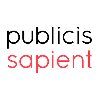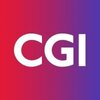Filter interviews by
EPAM Systems ETL Tester Interview Questions and Answers
12 Interview questions
ETL testing is the process of validating and verifying data extraction, transformation, and loading in a data warehouse or data mart.
ETL testing involves ensuring data is extracted correctly from the source systems
It also involves verifying that data is transformed accurately according to business rules
Lastly, ETL testing checks that the loaded data is accurate and complete in the target database
Examples include v...
A data warehouse is a centralized repository that stores structured and unstructured data from multiple sources for analysis and reporting.
Data warehouses are designed for querying and analysis rather than transaction processing.
They often contain historical data that is used for creating reports and data analysis.
Data warehouses typically use ETL processes to extract, transform, and load data from various sources...
I will produce test plan, test cases, test scripts, defect reports, and test summary report.
Test plan outlining the testing approach and scope
Test cases with steps, expected results, and actual results
Test scripts for automation
Defect reports with steps to reproduce and severity
Test summary report with overall results and recommendations
Incomplete testing can lead to undetected defects and potential risks in production.
Undetected defects can cause system failures and downtime.
Incomplete testing can lead to security vulnerabilities.
Lack of testing can result in poor user experience and customer dissatisfaction.
Incomplete testing can lead to increased maintenance costs and longer development cycles.
What people are saying about EPAM Systems





Requirements are mapped to test cases by analyzing the requirements and creating test cases that cover all the aspects of the requirement.
Analyze the requirement document thoroughly
Identify the key functionalities and features
Create test cases that cover all the aspects of the requirement
Ensure that the test cases are traceable to the requirement
Review and validate the test cases with stakeholders
Defects life cycle is a process that describes the stages of a defect from discovery to resolution.
Defect is identified and reported
Defect is assigned to a developer
Developer fixes the defect
Defect is retested by the tester
If the defect is still present, it is reopened
If the defect is fixed, it is closed
Iterative model is a software development model where the development process is divided into smaller iterations.
Iterative model involves repeating the development process in small cycles.
Each cycle involves planning, designing, building, testing and evaluating the software.
Feedback from each cycle is used to improve the software in the next cycle.
Iterative model is useful when requirements are not clear or keep c...
Test plan is a detailed document that outlines the testing approach and activities. Test strategy is a high-level document that outlines the testing objectives and methods.
Test plan is more detailed than test strategy
Test plan includes specific test cases and test scenarios
Test strategy outlines the overall testing approach and objectives
Test strategy is created before the test plan
Test strategy is reviewed and up...
Components of test cases include test case ID, test case description, test steps, expected results, actual results, and status.
Test case ID: unique identifier for the test case
Test case description: brief description of the test case
Test steps: detailed steps to execute the test case
Expected results: expected outcome of the test case
Actual results: actual outcome of the test case
Status: pass/fail status of the tes...
Files can be compared in Unix using the diff command.
Use the 'diff' command followed by the two file names to compare them.
The output will show the differences between the two files.
Use the '-y' option to display the differences side by side.
Use the '-q' option to only show if the files are different or not.
Use the '-r' option to compare files in directories recursively.
EPAM Systems ETL Tester Interview Experiences
3 interviews found
I applied via Naukri.com and was interviewed in May 2024. There was 1 interview round.
(2 Questions)
- Q1. What is ETl testing
- Ans.
ETL testing is the process of validating and verifying data extraction, transformation, and loading in a data warehouse or data mart.
ETL testing involves ensuring data is extracted correctly from the source systems
It also involves verifying that data is transformed accurately according to business rules
Lastly, ETL testing checks that the loaded data is accurate and complete in the target database
Examples include valida...
- Q2. What is the data warehouse
- Ans.
A data warehouse is a centralized repository that stores structured and unstructured data from multiple sources for analysis and reporting.
Data warehouses are designed for querying and analysis rather than transaction processing.
They often contain historical data that is used for creating reports and data analysis.
Data warehouses typically use ETL processes to extract, transform, and load data from various sources.
Exam...
Skills evaluated in this interview
I applied via Referral and was interviewed before May 2023. There were 3 interview rounds.
Need to solve the use case and prepare code
(1 Question)
- Q1. Relevant questions on real time scenarios
(1 Question)
- Q1. Many questions they asked
I applied via Company Website and was interviewed in Jan 2022. There were 2 interview rounds.
(17 Questions)
- Q1. What is the difference between Test Plan and Test strategy
- Ans.
Test plan is a detailed document that outlines the testing approach and activities. Test strategy is a high-level document that outlines the testing objectives and methods.
Test plan is more detailed than test strategy
Test plan includes specific test cases and test scenarios
Test strategy outlines the overall testing approach and objectives
Test strategy is created before the test plan
Test strategy is reviewed and updated...
- Q2. What is requirement traceability matrix.. compatibility Testing
- Ans.
Requirement Traceability Matrix is a document that links requirements to test cases. Compatibility testing checks if software works on different platforms.
Requirement Traceability Matrix (RTM) is used to ensure that all requirements are tested and covered in test cases.
RTM helps in tracking the progress of testing and ensures that all requirements are met.
Compatibility testing is done to ensure that software works on d...
- Q3. Explain STLC .. difference between water fall and Agile methodologies
- Ans.
STLC is Software Testing Life Cycle which includes planning, designing, executing and reporting. Waterfall is a linear approach while Agile is iterative.
STLC is a process of testing software from planning to reporting
Waterfall is a linear approach where each phase is completed before moving to the next
Agile is an iterative approach where testing is done in short cycles called sprints
In Waterfall, testing is done at the...
- Q4. Where do you mantain entry and exit criteria
- Q5. There are some sql queries questions
- Q6. What is a iterative model
- Ans.
Iterative model is a software development model where the development process is divided into smaller iterations.
Iterative model involves repeating the development process in small cycles.
Each cycle involves planning, designing, building, testing and evaluating the software.
Feedback from each cycle is used to improve the software in the next cycle.
Iterative model is useful when requirements are not clear or keep changi...
- Q7. Why do you want job change
- Q8. Questions on sql joins
- Q9. Questions on HP ALM Test management tool
- Q10. Explain Defects life cycle
- Ans.
Defects life cycle is a process that describes the stages of a defect from discovery to resolution.
Defect is identified and reported
Defect is assigned to a developer
Developer fixes the defect
Defect is retested by the tester
If the defect is still present, it is reopened
If the defect is fixed, it is closed
- Q11. How do you map requirement to test cases
- Ans.
Requirements are mapped to test cases by analyzing the requirements and creating test cases that cover all the aspects of the requirement.
Analyze the requirement document thoroughly
Identify the key functionalities and features
Create test cases that cover all the aspects of the requirement
Ensure that the test cases are traceable to the requirement
Review and validate the test cases with stakeholders
- Q12. How do you compare files in Unix
- Ans.
Files can be compared in Unix using the diff command.
Use the 'diff' command followed by the two file names to compare them.
The output will show the differences between the two files.
Use the '-y' option to display the differences side by side.
Use the '-q' option to only show if the files are different or not.
Use the '-r' option to compare files in directories recursively.
- Q13. Agile methodologie , questions on scrum master
- Q14. What are the components of test cases
- Ans.
Components of test cases include test case ID, test case description, test steps, expected results, actual results, and status.
Test case ID: unique identifier for the test case
Test case description: brief description of the test case
Test steps: detailed steps to execute the test case
Expected results: expected outcome of the test case
Actual results: actual outcome of the test case
Status: pass/fail status of the test cas...
- Q15. What risks do you see in Test completion
- Ans.
Incomplete testing can lead to undetected defects and potential risks in production.
Undetected defects can cause system failures and downtime.
Incomplete testing can lead to security vulnerabilities.
Lack of testing can result in poor user experience and customer dissatisfaction.
Incomplete testing can lead to increased maintenance costs and longer development cycles.
- Q16. Tell us about your current project . Roles and responsibilities
- Q17. What documents will you produce durimg and sfter testing phase
- Ans.
I will produce test plan, test cases, test scripts, defect reports, and test summary report.
Test plan outlining the testing approach and scope
Test cases with steps, expected results, and actual results
Test scripts for automation
Defect reports with steps to reproduce and severity
Test summary report with overall results and recommendations
(1 Question)
- Q1. Waiting for the round 2
Interview Preparation Tips
- SQL
- Manual Testing
- ETL Testing
- Unix Shell Scripting
Skills evaluated in this interview
Interview questions from similar companies

I applied via Referral and was interviewed before Jul 2021. There was 1 interview round.
(1 Question)
- Q1. About yourself and technology you know
Interview Preparation Tips
What people are saying about EPAM Systems






Interview Questionnaire
1 Question
- Q1. 3 rounds of interviews, 1. Technical: basics java & selenium & framework , 2. Technical: API and selenium questions, 3. Manager round: why you want to leave, some company-related questions.
Interview Preparation Tips

Interview Questionnaire
1 Question
- Q1. About our interests and check communication skills
Interview Preparation Tips

Consultant Interview Questions & Answers
Sutherland Global Servicesposted on 20 Jun 2023
I applied via Walk-in and was interviewed before Jun 2022. There were 3 interview rounds.

(1 Question)
- Q1. Tell about yourself.
(2 Questions)
- Q1. Tell about yourself, Tell me any memorable event.
- Q2. Are you a resident of Chennai?
Interview Preparation Tips

I applied via Approached by Company and was interviewed before Apr 2022. There were 4 interview rounds.

Reasoning and analytics, some questions related to maths and common senario bassed
(1 Question)
- Q1. Video call interview
(1 Question)
- Q1. Some discussion related joining formalities
Interview Preparation Tips

I appeared for an interview before Aug 2016.
Interview Questionnaire
1 Question
- Q1. Asked about Resume and family background
Interview Preparation Tips
Experience: Asked about the topic and was told to talk something different
Tips: Just be confident. Have trust in God!
Duration: 25 minutes
Round: Test
Experience: Simple questions were asked to test the skills!
Duration: 45 minutes
Total Questions: 25

I appeared for an interview in Jun 2016.
Interview Questionnaire
3 Questions
- Q1. General hr questions
- Q2. About technology used earlier
- Q3. Included work profile and negotiations
EPAM Systems Interview FAQs
Tell us how to improve this page.
EPAM Systems Interviews By Designations
- EPAM Systems Senior Software Engineer Interview Questions
- EPAM Systems Software Engineer Interview Questions
- EPAM Systems Software Developer Interview Questions
- EPAM Systems Automation Test Engineer Interview Questions
- EPAM Systems Java Developer Interview Questions
- EPAM Systems Lead Software Engineer Interview Questions
- EPAM Systems Senior Data Engineer Interview Questions
- EPAM Systems Senior Business Analyst Interview Questions
- Show more
Interview Questions for Popular Designations
Overall Interview Experience Rating
based on 2 interview experiences
Difficulty level
Duration
Interview Questions from Similar Companies
EPAM Systems ETL Tester Reviews and Ratings
based on 1 review
Rating in categories
|
Senior Software Engineer
3.7k
salaries
| ₹16.4 L/yr - ₹37.2 L/yr |
|
Software Engineer
2.2k
salaries
| ₹8.5 L/yr - ₹23.8 L/yr |
|
Lead Software Engineer
1.1k
salaries
| ₹29.9 L/yr - ₹47 L/yr |
|
Senior Systems Engineer
390
salaries
| ₹22 L/yr - ₹36.3 L/yr |
|
Software Developer
366
salaries
| ₹10.2 L/yr - ₹30.5 L/yr |

DXC Technology

Sutherland Global Services

Optum Global Solutions

Virtusa Consulting Services
- Home >
- Interviews >
- EPAM Systems Interview Questions













